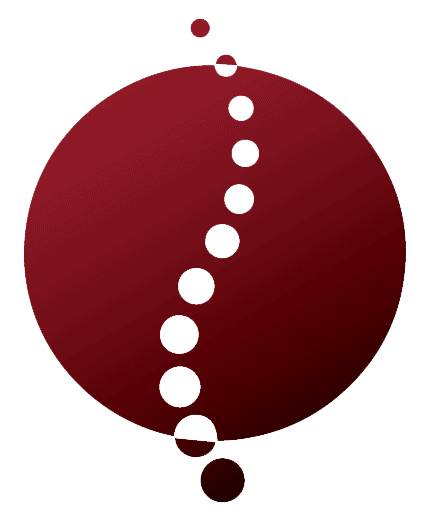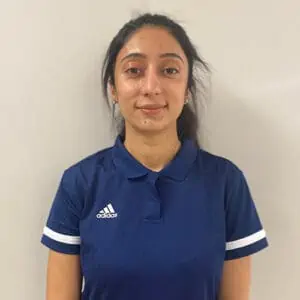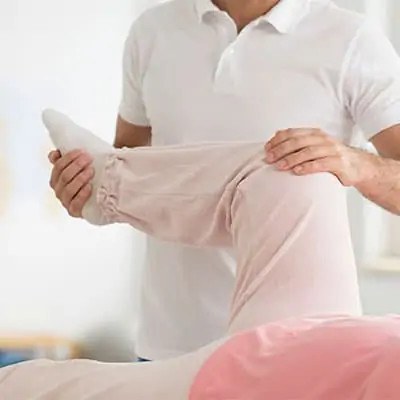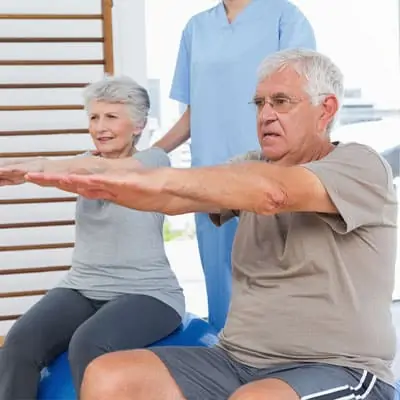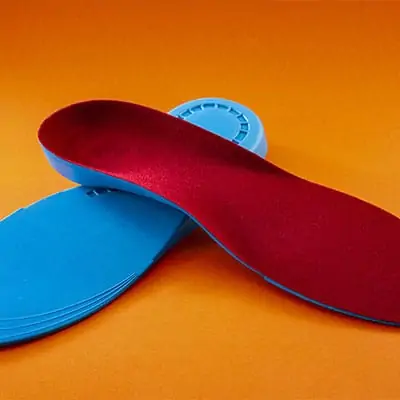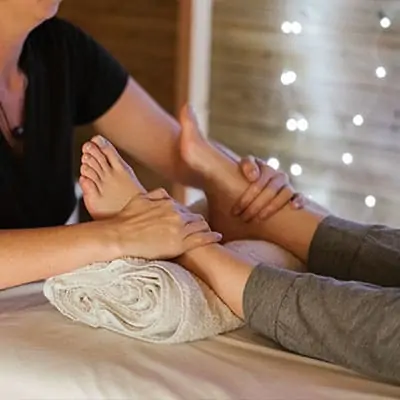Understanding Stroke Rehabilitation
Stroke rehabilitation is an essential process for individuals who have experienced a stroke. This section discusses the importance of rehabilitation after a stroke and the primary goals to aim for during the recovery journey.
Importance of Rehabilitation After a Stroke
Neurological physiotherapy in Cambridge is crucial in the aftermath of a stroke because it helps us regain lost abilities and improve our quality of life. Strokes can have various effects, and rehabilitation can address motor skills, cognitive functions, and emotional well-being. Early intervention can lead to better outcomes, reducing the risk of long-term disability and improving our ability to perform daily activities independently.
rehabilitation assists in:
- Restoring physical strength and mobility
- Enhancing speech and communication skills
- Improving cognitive functions such as memory and problem-solving
- Emotional support and mental health stability
These benefits highlight the necessity of a well-structured rehabilitation program tailored to our individual needs. For those interested in related neurological conditions, the strategies are discussed in more detail in our sections on multiple sclerosis physiotherapy and parkinsons disease rehabilitation.
Goals of Stroke Rehabilitation
The primary goals of stroke rehabilitation focus on recovery and enhancement of our functional abilities. Here are some major objectives that a rehabilitation program aims to achieve:
- Restoring Physical Function: Rebuilding strength and coordination to enable us to perform everyday tasks, such as walking and lifting objects.
- Regaining Independence: Learning techniques and using tools to regain independence in personal care and daily activities.
- Improving Communication: Enhancing speech and language skills to aid effective communication.
- Boosting Cognitive Abilities: Enhancing memory, attention, and problem-solving skills through targeted exercises.
- Emotional and Psychological Support: Providing support to cope with the emotional impact of a stroke and to foster mental health.
| Goals | Description |
|---|---|
| Restoring Physical Function | Strengthen muscles, improve balance, and enhance coordination. |
| Regaining Independence | Self-care techniques and adaptive devices for daily activities. |
| Improving Communication | Speech therapy to reconstruct language and communication skills. |
| Boosting Cognitive Abilities | Exercises for memory, attention, and cognitive processing. |
| Emotional Support | Coping strategies and psychological assistance to manage emotions. |
These goals highlight the multifaceted approach required in stroke rehabilitation. Different therapies like physical therapy, occupational therapy, and speech therapy each play a role in achieving these objectives.
Understanding the importance and goals of stroke rehabilitation helps us prepare better and set realistic expectations for our recovery journey. For further reading on how various therapies can aid in recovery, consider exploring neuroplasticity training and functional movement disorders physiotherapy.
The Rehabilitation Team
Stroke rehabilitation is a collaborative effort involving various specialists. An effective team ensures comprehensive care and holistic recovery.
Role of the Physiotherapist
Physiotherapists play a critical role in stroke rehabilitation. Their primary goal is to improve physical function, mobility, and quality of life. They design personalized exercise programs that target specific impairments resulting from a stroke. These exercises help in:
- Enhancing muscle strength
- Improving coordination and balance
- Increasing joint mobility
- Reducing muscle spasticity
Common Physiotherapy Interventions:
| Intervention | Purpose |
|---|---|
| Strength Training Exercises | Increase muscle strength |
| Balance and Gait Training | Improve stability and walking ability |
| Functional Electrical Stimulation | Muscle re-education |
| Range of Motion Exercises | Enhance joint flexibility |
| Aerobic Conditioning | Improve cardiovascular health |
For more detailed information, visit our article on balance and gait training.
Collaborating with Occupational Therapists and Speech Therapists in Rehabilitation
Collaboration among physiotherapists, occupational therapists (OTs), and speech therapists is vital for a successful rehabilitation process. Each specialist brings unique skills to the table, addressing different aspects of stroke recovery.
Occupational Therapists focus on helping patients regain the skills necessary for daily living activities. They assist in:
- Enhancing fine motor skills
- Improving hand-eye coordination
- Adapting living environments for safety
- Teaching adaptive techniques for independent living
Speech Therapists work on communication skills and swallowing disorders, crucial aspects often affected by strokes. They focus on:
- Enhancing speech and language abilities
- Teaching alternative communication methods
- Improving swallowing function
- Supporting cognitive communication skills
| Specialist | Key Focus | Example Interventions |
|---|---|---|
| Physiotherapist | Physical mobility and strength | Strength training, balance exercises |
| Occupational Therapist | Daily living activities and manual skills | Hand-eye coordination, adaptive techniques |
| Speech Therapist | Communication and swallowing | Speech exercises, swallowing techniques |
Collaboration ensures all aspects of stroke recovery are addressed, leading to a more comprehensive rehabilitation. For further insight, explore related topics on neuromuscular rehabilitation and functional electrical stimulation (fes).
The synergy between these specialists enhances the overall rehabilitation experience, promoting a faster and more effective recovery for stroke survivors. This integrated approach helps in achieving the ultimate goal: improving the patient’s independence and quality of life.
Types of Stroke Rehabilitation
Stroke rehabilitation is a comprehensive process that involves various types of therapy to help us regain our strength, functionality, and independence. Understanding these forms of rehabilitation can guide us in making informed decisions about our recovery journey.
Physical Therapy
Physical therapy focuses on improving our movement and physical function. After a stroke, we may experience weakness or paralysis on one side of our body, making tasks such as walking or standing challenging. Through targeted exercises, a physiotherapist helps us regain strength, coordination, and balance.
| Exercise Type | Purpose |
|---|---|
| Range of Motion Exercises | Improve flexibility |
| Strengthening Exercises | Build muscle strength |
| Balance Exercises | Enhance stability |
| Functional Training | Practice daily activities |
For more information on how physical therapy can aid in recovery, refer to our article on balance and gait training.
Occupational Therapy
Occupational therapy aids us in relearning the skills necessary for daily living. This type of therapy helps us regain independence by focusing on tasks such as dressing, eating, and personal hygiene. Occupational therapists work with us to develop strategies to overcome the physical and cognitive challenges we may face.
| Activity | Goal |
|---|---|
| Dressing | Increase self-care ability |
| Cooking | Enhance coordination and safety |
| Writing | Improve fine motor skills |
| Memory Exercises | Strengthen cognitive functions |
Explore more about addressing challenges in daily activities through our article on functional movement disorders physiotherapy.
Speech Therapy
Speech therapy is essential for those of us who experience difficulties with speaking, understanding language, reading, or swallowing after a stroke. Speech-language pathologists (SLPs) work with us to improve our communication skills and address any issues related to speech and swallowing.
| Therapy Type | Focus Area |
|---|---|
| Articulation Therapy | Improve clarity of speech |
| Cognitive-Communication Therapy | Enhance memory and problem-solving |
| Swallowing Therapy | Assist with safe eating and drinking |
| Language Therapy | Aid in understanding and using words |
Understanding the role of speech therapy in stroke recovery is crucial. For additional resources, check our article on neuroplasticity training.
Each type of stroke rehabilitation plays a critical role in our journey towards recovery. By engaging in these therapies, we build a foundation for regaining our strength and independence, ultimately enhancing our quality of life.
Building Strength and Independence
Stroke rehabilitation is crucial for regaining physical strength and restoring independence. By focusing on targeted exercises and techniques, we can improve our abilities and enhance our quality of life.
Exercises to Improve Physical Strength
Strengthening exercises are vital in stroke recovery. They target weakened muscles and help improve overall mobility. Here are some exercises commonly recommended:
| Exercise | Description |
|---|---|
| Resistance Training | Using resistance bands or light weights to strengthen muscles. |
| Leg Raises | Lying on your back and slowly raising one leg at a time. |
| Seated Marching | Sitting in a chair and lifting your knees alternately. |
| Arm Raises | Holding a light weight and raising your arm to shoulder height. |
These exercises focus on different muscle groups and are often tailored to individual needs. Regular practice improves muscle tone, enhances coordination, and boosts confidence.
For more in-depth guidance, visit our article on multiple sclerosis physiotherapy, which offers insights into exercises that can also be beneficial in stroke recovery.
Techniques to Regain Independence in Daily Activities
Regaining independence involves relearning daily activities that may become challenging post-stroke. Here are a few techniques:
| Activity | Technique |
|---|---|
| Dressing | Using adaptive clothing and practicing simple dressing techniques. |
| Eating | Utilizing specialized utensils and practicing hand-to-mouth coordination. |
| Bathing | Implementing grab bars and using a shower chair for safety and support. |
| Mobility | Practicing transfers from a chair to a standing position and walking with assistance if necessary. |
Occupational therapists play a crucial role in teaching these techniques. Collaborating with them ensures that we receive personalized strategies suited to our unique needs. Check out our section on occupational therapy to understand how occupational therapists contribute to stroke rehabilitation.
Building strength and independence goes hand-in-hand with mental and emotional well-being. Understanding the importance of neuromuscular rehabilitation and balance and gait training helps us to achieve a holistic recovery, enabling us to lead a fulfilling life post-stroke.
By integrating these exercises and techniques into our rehabilitation routine, we can progressively regain control over our physical and daily activities, paving the way towards a more independent and empowered life.
Emotional Support and Mental Health
Emotional well-being and mental health are vital components of stroke rehabilitation. Addressing the emotional and psychological challenges can significantly impact recovery outcomes.
Coping Strategies for Emotional Well-Being
After a stroke, it’s crucial to adopt effective coping strategies to maintain emotional well-being. Here are some methods we can use:
- Positive Social Connections: Engaging with family and friends can provide strong emotional support.
- Joining Support Groups: Sharing experiences with others who have undergone similar circumstances can be therapeutic.
- Mindfulness and Relaxation Techniques: Practices like deep breathing, meditation, and progressive muscle relaxation can help manage stress.
- Setting Realistic Goals: Breaking larger goals into smaller, achievable steps can prevent feelings of overwhelm and foster a sense of accomplishment.
Addressing Mental Health Challenges Post-Stroke
Post-stroke, many individuals face mental health challenges such as depression, anxiety, and cognitive impairments. Identifying and addressing these challenges early is essential for comprehensive stroke rehabilitation.
| Mental Health Challenge | Possible Symptoms | Suggested Strategies |
|---|---|---|
| Depression | Persistent sadness, loss of interest, fatigue | Counseling, medications, physical activity |
| Anxiety | Excessive worry, restlessness, difficulty sleeping | Cognitive-behavioral therapy, relaxation techniques |
| Cognitive Impairments | Memory loss, trouble with problem-solving, confusion | Cognitive therapy, brain exercises, structured routines |
It’s important to understand that seeking help from mental health professionals is a vital part of stroke rehabilitation. Integrating psychological care with physical therapy and other forms of rehabilitation enhances overall recovery.
For additional support on related neurological conditions, explore our articles on multiple sclerosis physiotherapy, parkinsons disease rehabilitation, and spinal cord injury rehabilitation. Let’s work towards building strength, both physically and emotionally, during the rehabilitation journey.
Long-Term Strategies for Stroke Recovery
To build strength and maintain progress after a stroke, it’s crucial to adopt long-term strategies that support continued recovery. These strategies involve comprehensive lifestyle changes and consistent efforts to prevent recurrence.
Lifestyle Changes for Better Health
Lifestyle changes are an essential component of stroke rehabilitation. Adopting healthy habits not only aids recovery but also reduces the risk of future strokes. Here are some lifestyle changes that can improve our overall health:
- Diet and Nutrition:
- A balanced diet rich in fruits, vegetables, whole grains, and lean proteins can support brain health and overall well-being.
- Reducing sodium intake helps manage blood pressure.
- Limiting saturated fats can decrease cholesterol levels.
- Regular Exercise:
- Engaging in regular physical activity strengthens muscles and improves cardiovascular health.
- Activities like walking, swimming, and balance and gait training are particularly beneficial.
- Smoking Cessation:
- Quitting smoking significantly lowers the risk of stroke recurrence.
- Alcohol Moderation:
- Limiting alcohol consumption can prevent health issues related to blood pressure and heart disease.
- Stress Management:
- Practices such as yoga, meditation, and deep-breathing exercises help manage stress and improve mental health.
Maintaining Progress and Preventing Recurrence
Consistency is key when it comes to maintaining the progress we’ve achieved through rehabilitation. To ensure continued improvement and prevent the recurrence of strokes, we should focus on the following areas:
- Routine Follow-ups:
- Regular check-ups with healthcare providers help monitor our condition and make necessary adjustments to treatment plans.
- Ongoing Therapy:
- Continuing with physical, occupational, and speech therapy sessions can reinforce the skills we’ve regained and further enhance our abilities.
- Support Networks:
- Connecting with support groups and networks provides emotional support and encourages adherence to rehabilitation routines.
- Medication Adherence:
- Following prescribed medication regimens is paramount in managing risk factors like hypertension and diabetes.
- Monitoring Health Indicators:
- Keeping track of blood pressure, cholesterol levels, and blood sugar levels helps us stay proactive in managing our health.
| Health Indicator | Optimal Range |
|---|---|
| Blood Pressure | <120/80 mmHg |
| Cholesterol Level | <200 mg/dL |
| Blood Sugar Level (Fasting) | 70-99 mg/dL |
By embracing these long-term strategies, we can continue to build strength and safeguard against future strokes. For further insights into neurological physiotherapy, check out related topics like neuromuscular rehabilitation and functional electrical stimulation (FES).
